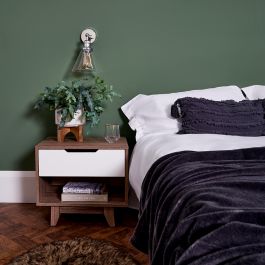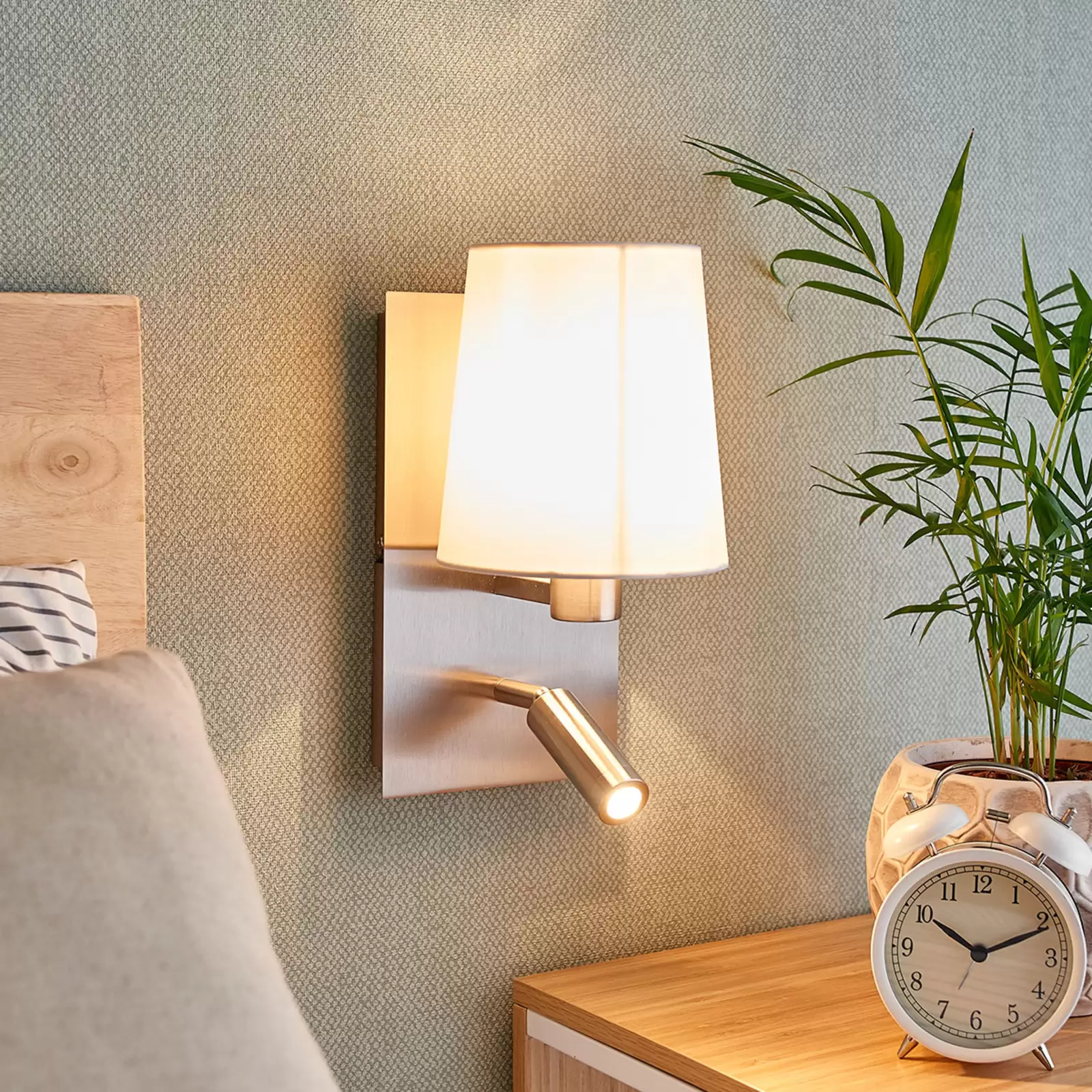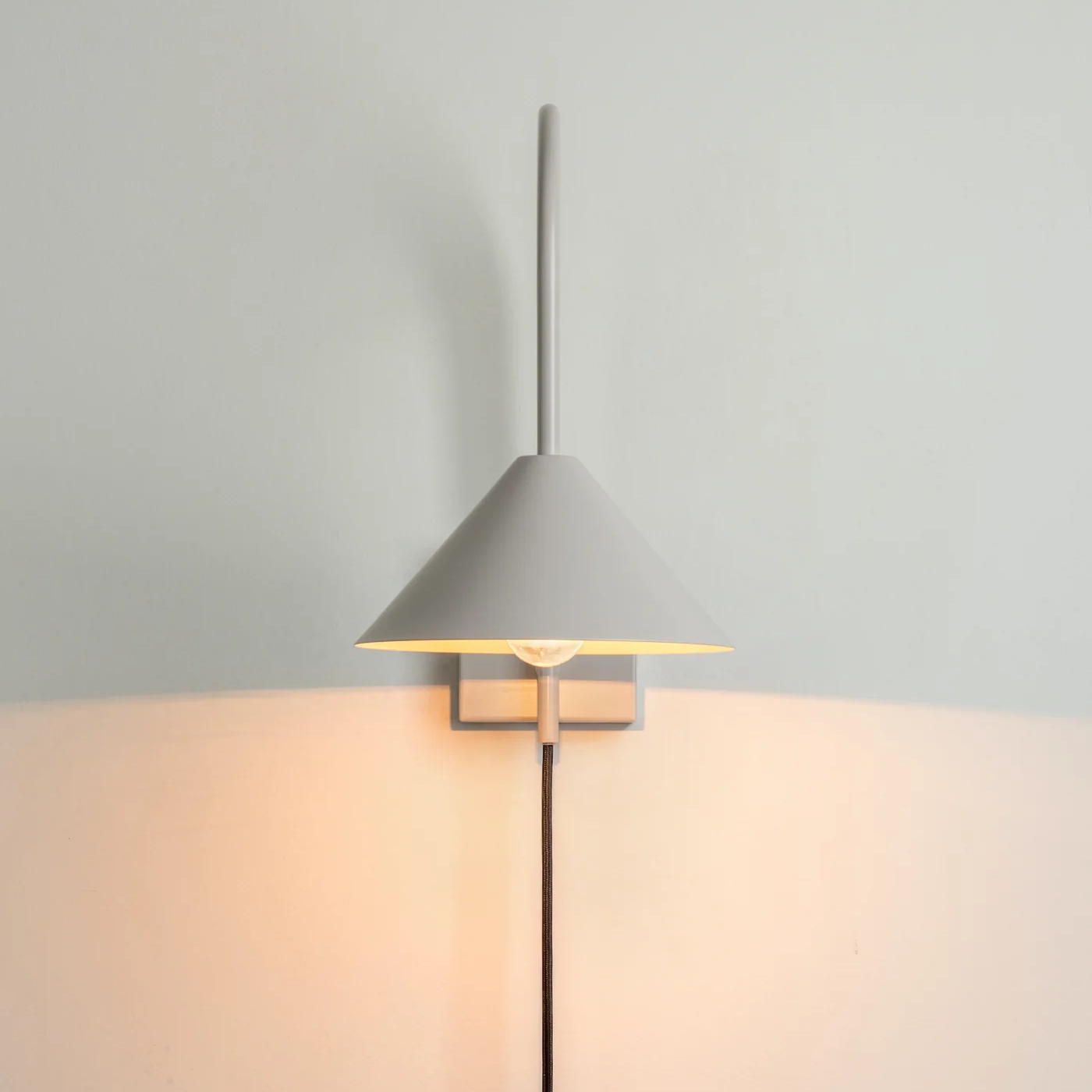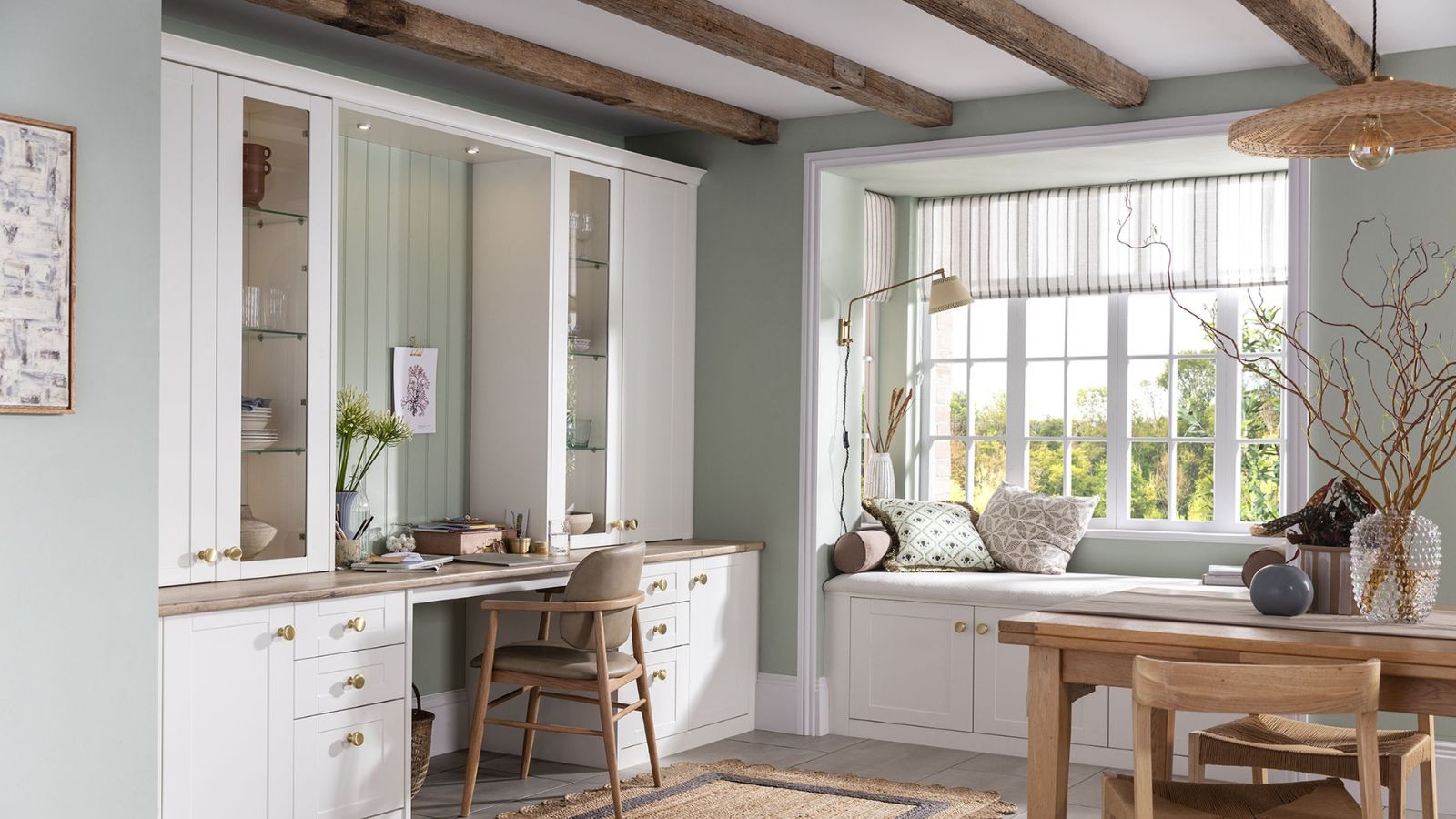How to make a small bedroom look bigger: 5 areas to focus on
We've got expert advice on how to make a small bedroom look bigger if your floor plan is limited – none of which involve knocking down walls
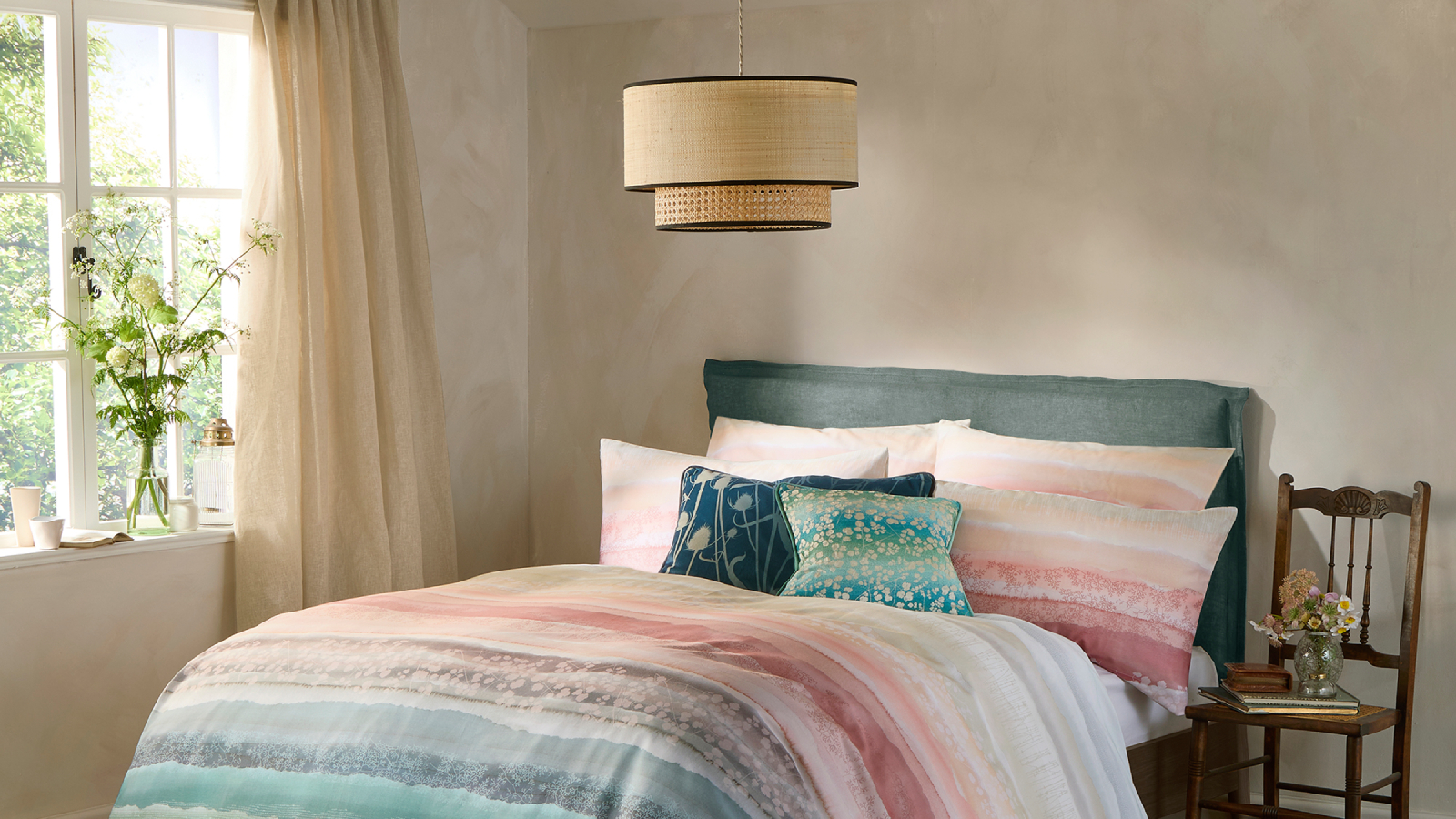
Knowing how to make a small bedroom look bigger is knowledge worth having, regardless of who will inhabit the bedroom. Whether you're undertaking a bedroom design for a child, adult, or even occasional guests, no-one wants to feel cramped in the space – even though you spend the majority of your time in there with your eyes closed.
But when bedrooms are homes for belongings as well as bodies, how do you make the most out of the space if your floor plan is more bijoux than bountiful?
The good news is, get the following five areas right say the experts and you will create a bedroom that should feel bigger than it actually is.
How to make a small bedroom look bigger: A strategic approach
"Creating the illusion of a larger space in small bedroom ideas is all about clever design and strategic choices," says Chelsea Clark, head of marketing at Lust Home. Picking the right colours, furniture, patterns and finishes before you start can ensure your scheme comes together cohesively.
"These design strategies not only cater to aesthetic and functional improvements but also align with the increasing searches for creating more spacious environments in small living areas," says Ian Hall, interior design expert at Dendo Design. "As more people embrace compact living, the ability to creatively maximise and personalise small spaces becomes essential. Whether it's through colour choices, strategic furniture placement, or innovative storage solutions, these tips can help transform any compact room into a seemingly expansive and more enjoyable space."

Launching anything but ordinary wallpaper brand, Lust Home, in 2021, Chelsea Clark is now Head of Marketing across the Henderson Design Group that includes Lust Home, I Love Wallpaper and Lucie Annabel and has great expertise in using wallpaper well.

Ian Hall is a seasoned home decor expert with over 15 years of experience in the industry. His extensive knowledge encompasses a wide range of styles and trends, making him a sought-after consultant for both residential and commercial projects. Ian's passion for home decor is evident in his meticulous attention to detail.
1. Colours and patterns
"When it comes to choosing colours for a small bedroom, it's essential to prioritise light and neutral tones if you want to know how to make a small bedroom look bigger," says Debbie Leigh, design manager at lliv. "Light colours, such as soft pastels or whites, create a sense of spaciousness and reflect natural light, making the room feel airy and open."
"Soft tones like off-white, blues, and greens are especially effective," adds Ian Hall.
Bring your dream home to life with expert advice, how to guides and design inspiration. Sign up for our newsletter and get two free tickets to a Homebuilding & Renovating Show near you.
For a clean and simple approach, "consider incorporating a monochromatic colour scheme to maintain a cohesive and visually pleasing look," suggests Debbie. "If you want to add pops of colour, opt for accent pieces like throw pillows, artwork, or use them in your bedroom decor ideas, but avoid dark and intense colours, as they can make the space appear smaller and more confined."
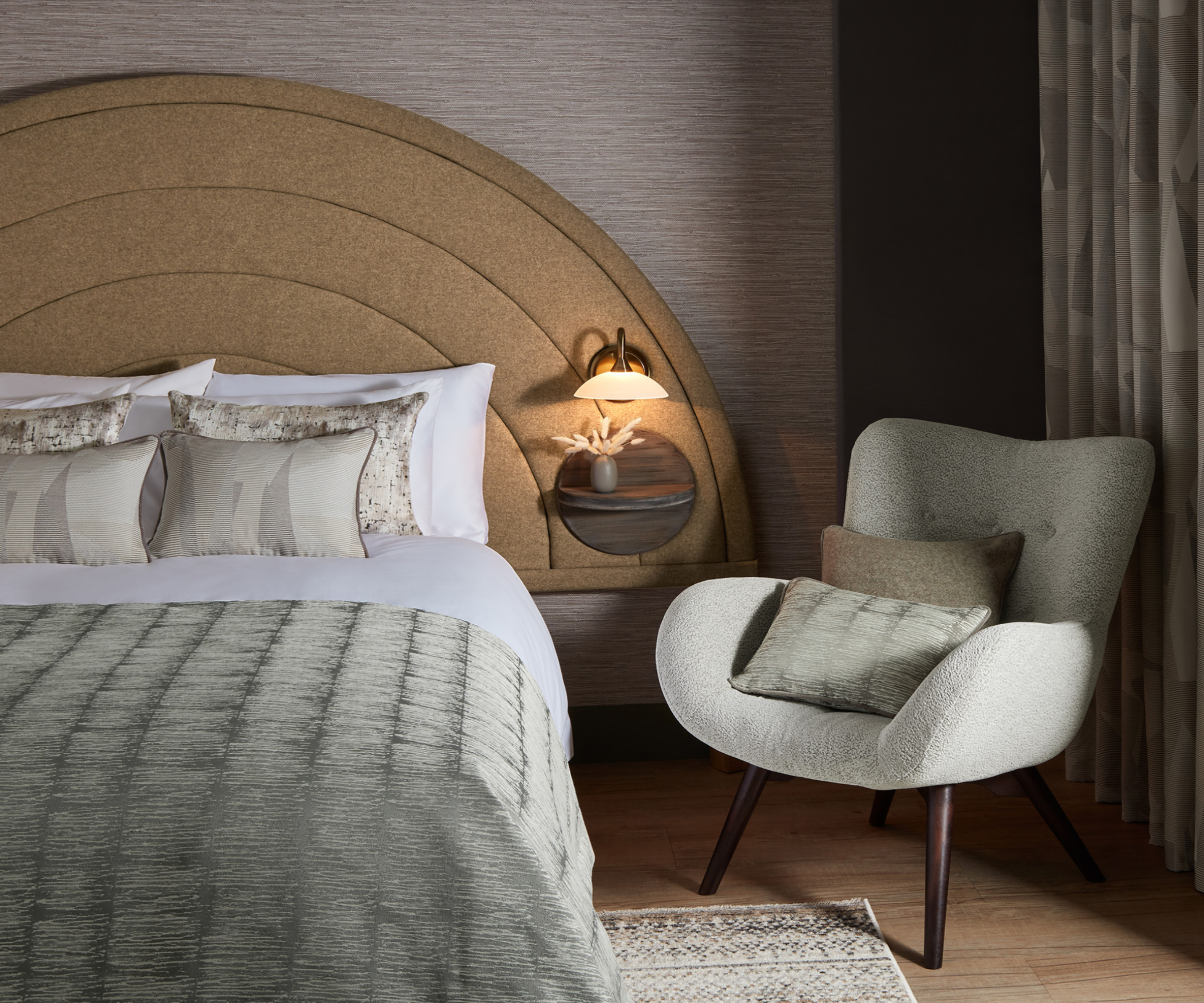
Award-winning designer Matthew Williamson says, “I’ve always been an advocate of using colour in the home in all rooms, regardless of their size. It’s really about understanding how you want to feel in the space in question and then choosing a shade that will help reflect and embody that feeling and mood.
"Colour used in a small space will tighten the scheme and enable all your other choices in the space to hang together well," he says. "The only colours I’d avoid for a small bedroom are perhaps red, orange, black and dark grey, as they can become a bit intense for day-to-day living.”

Debbie is an expert in creating beautifully coordinated fabric collections that can be easily combined to create harmonious interior schemes. With more than 30 years of experience, she takes every design from conception right through to the finished textile.

Matthew Williamson is an award-winning British interior designer, known predominantly for his unique and unrivalled use of pattern and colour. Having begun his illustrious career in fashion under his namesake brand over 20 years ago, Matthew has drawn on his decades of experience and pivoted seamlessly into the world of interior design.
Pattern
Prefer wallpaper to paint in your bedroom ideas? Chelsea Clark offers her tips for a successful solution that can help you boost your knowledge of how to make a small bedroom look bigger.
"Lighter coloured wallpapers with subtle patterns can brighten a room, making it feel more spacious. Smaller patterns or busy prints tend to make a space feel smaller, whereas a large repeating print can create a sense of continuity and flow, drawing the eye across the room and giving the illusion of a more expansive area.
"This technique helps break up the visual clutter and provides a focal point that enhances the room’s perceived size," says Chelsea.
"When it comes to choosing a pattern, vertical stripes are particularly effective, as they draw the eye upward and give the illusion of higher ceilings. Horizontal stripes, on the other hand, can make a room feel wider, which is useful for narrow spaces."
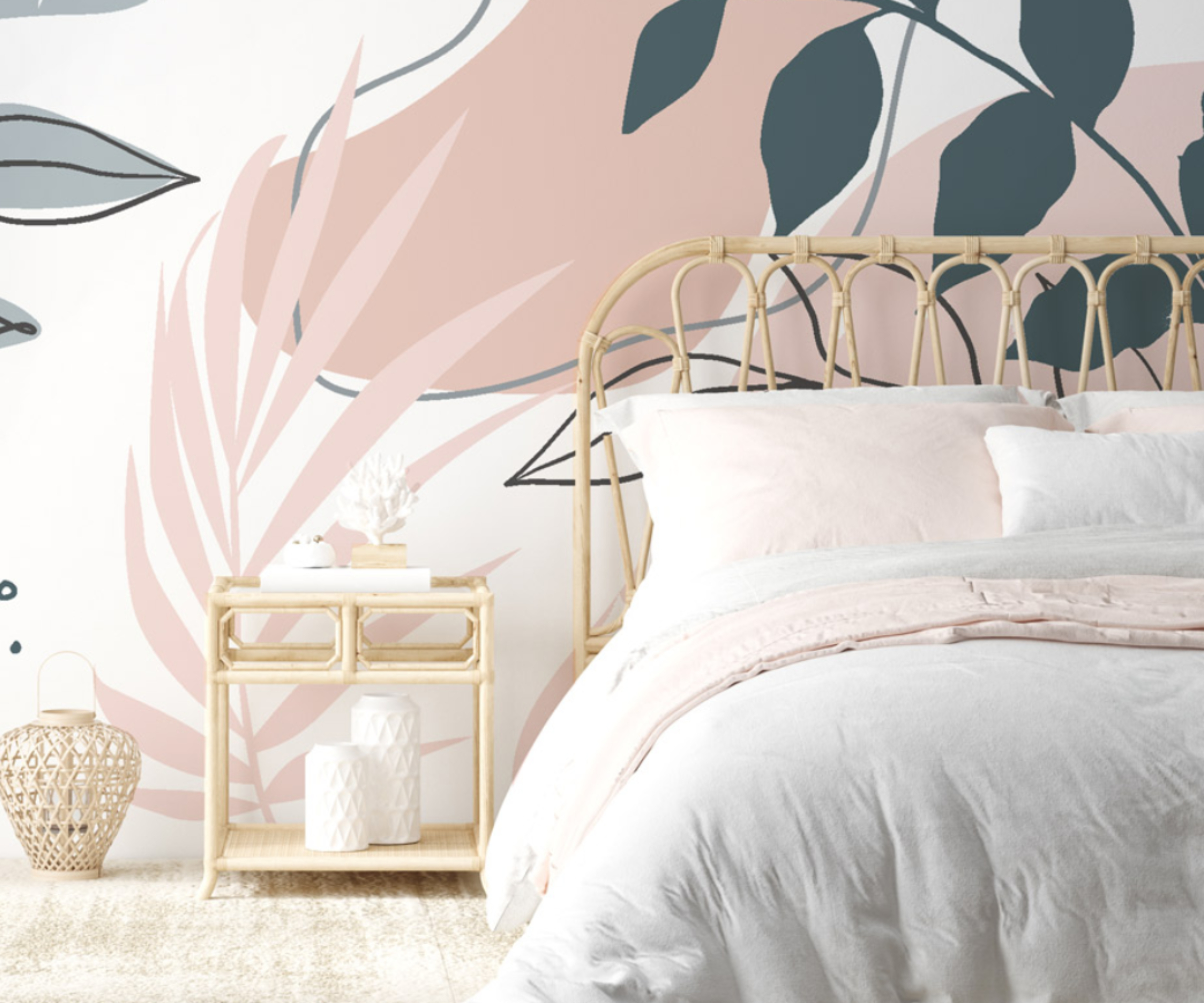
2. Lighting
Marlena Kaminska, designer at ValueLights, says, “a really common mistake people make in small bedrooms is to rely on their ceiling lighting to provide the sole illumination for their bedroom lighting ideas.
“No matter the square footage of your room, relying on your ceiling lighting will create a pool of light which will instantly make your room feel smaller. Instead, look to banish any dark corners in your room by layering your lighting with floor lamps, wall scones and uplighters. Remember, any room will look larger if it’s well-lit.”
“The proportions of your lighting fixtures is one of the easiest factors to overlook," adds Marlena, "but can cause one of the biggest aesthetic eyesores and distractions in your bedroom.
“Getting the scale of your lighting in alignment with your room’s layout and size is vital to ensure it creates the desired impact within your space - both practically and aesthetically. In a small bedroom, avoid oversized ceiling lighting which can overwhelm your space.
"Instead, focus on creating an even spread of illumination through accent solutions such as table lamps and floor lamps.”
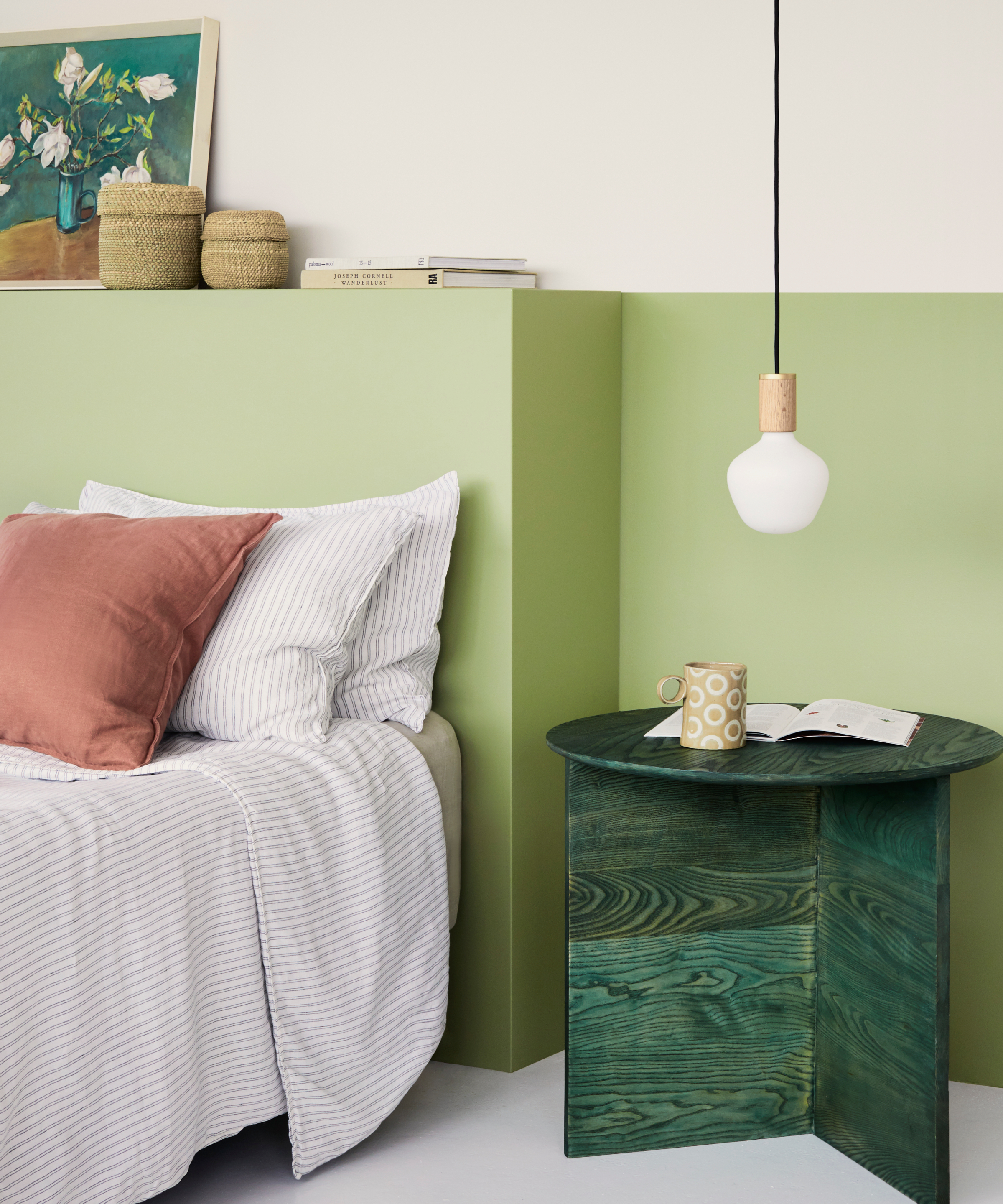
Practical lighting tips
- Use wall mounted bedside lights or low-hanging pendant lights to free up space on smaller bedside tables
- Consider rechargeable options that can be moved around and don't require a permanent plug socket

Marlena is a dynamic digital designer with a background in interior design. Taking a lead design role at home lighting brand ValueLights, Marlena merges her interior design expertise with her digital design prowess to bring innovation and style to the world of lighting.
Try these bedroom wall lights in small bedrooms
3. Furniture and storage
Despite its purpose as a room for sleep, bedrooms also need to provide a home for some of the bulkiest items of furniture you will buy and subsequently can have a big impact on your bedroom layout ideas. Beds, wardrobes and often desks all need to be squeezed into one space – often proving difficult if the space is compromised.
"For everyday access to clothes and belongings, divan beds are best as the drawers are easily accessible for daily needs," says Patricia Gibbons, head of buying at Sofa.com, "but if you require storage for clothing or bedding then an ottoman bed is the one for you.
"The hidden storage uncovered is vast and can hold countless sets of bedding and suitcases, but you wouldn’t want to be lifting it up and down on too regular a basis."
If your bedroom needs to double up as a home office, "look to storage benches and ottoman footstools sat at the end of the bed to quickly stash away laptops and chargers," says Patricia so that you can reclaim the space as one fit for relaxation in the evenings.
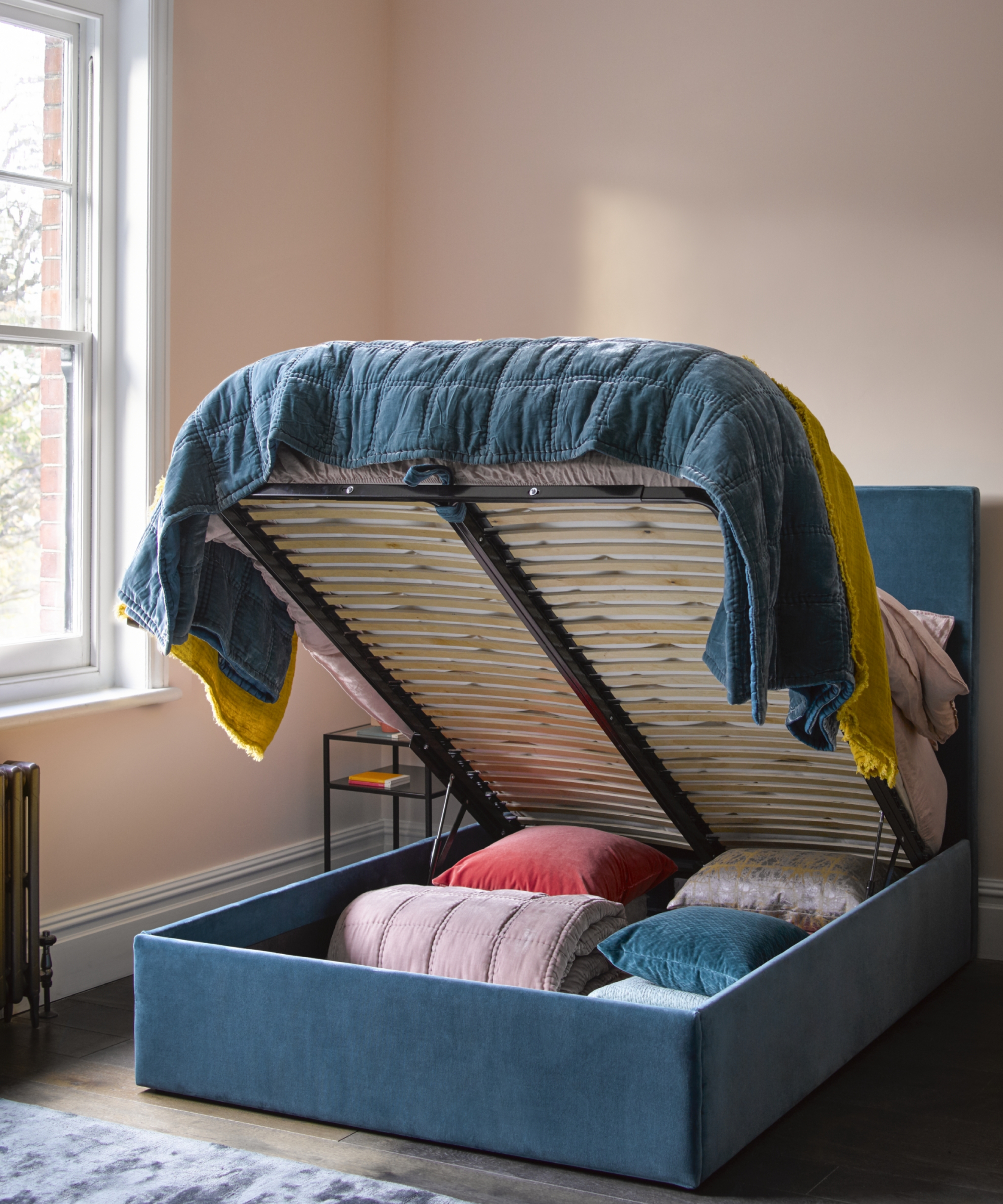
"Opt for furniture that fits the scale of the space," is Ian Hall's tip. "Choosing sleek, compact furniture can free up space. Multi-functional furniture, like beds with built-in storage or bedside tables, also works wonders. Multi-functional pieces save space and reduce clutter, combining style with practicality.
"Modular furniture is also an ideal solution for small bedrooms due to its inherent versatility and space-saving design," says Kate Palmer, creative director at The Painted Furniture Company.
"The adaptability of modular pieces allows you to make the most of the space, with a bespoke layout to suit the specific dimensions of the room, however small. In terms of layout, make the most of vertical space by incorporating tall modular shelving units or wardrobes. This helps keep the floor area open and provides additional storage without crowding the room.
"Avoid overcrowding the room with too many pieces," says Kate, "leaving enough open space to create a sense of airiness and prevent the room from feeling cramped."
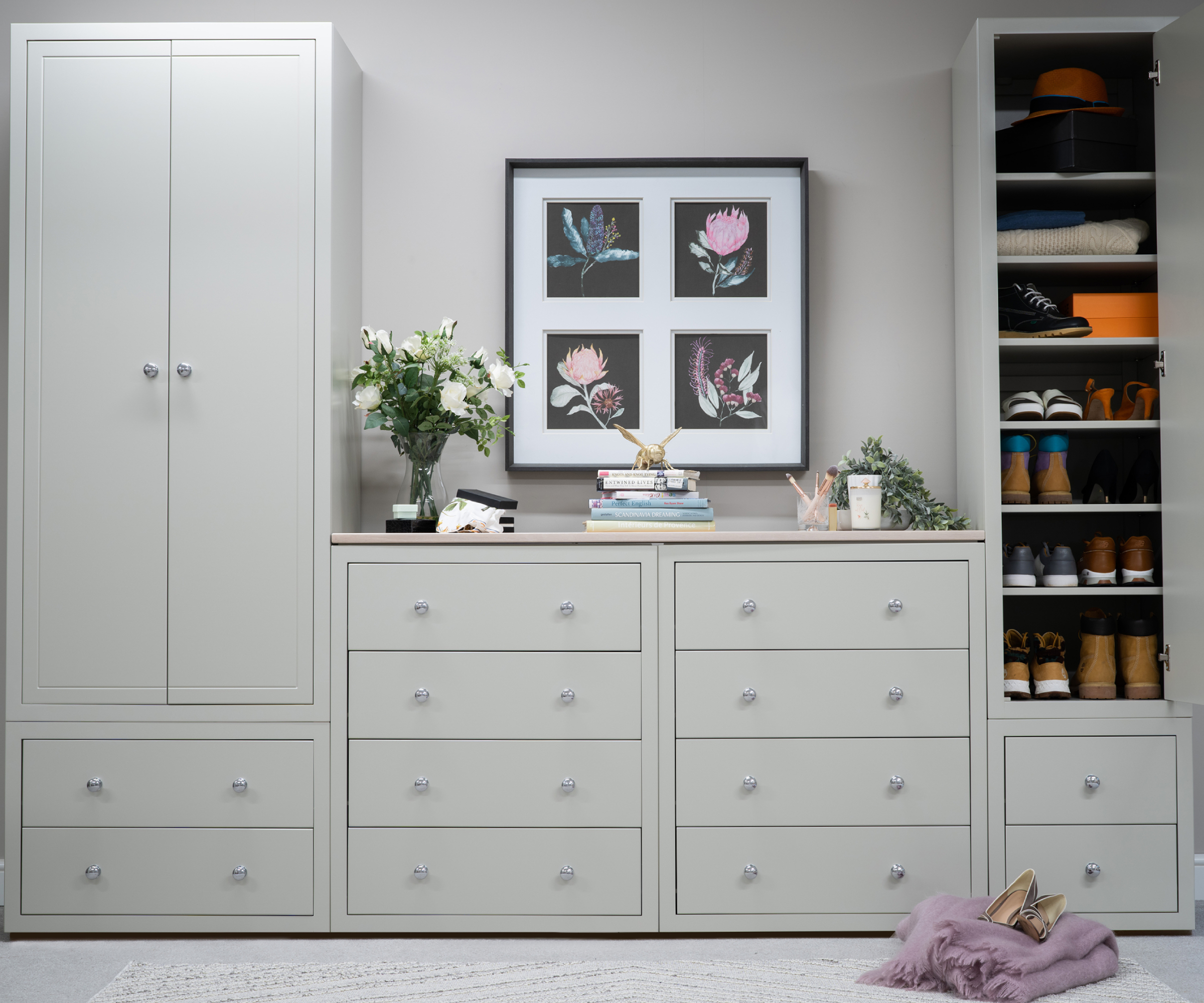
Additional furniture tips
- Use beds or bedside tables that have open sections allowing you to see the wall or floor to create the illusion of more space
- Don't be restricted to traditional furniture – stools and chairs can make great bedside tables
- Or, use a shelf above the bed if the room is too narrow
- Could a sofa bed work in your guest bedroom ideas rather than a bed to give you more floor space?
- Weigh up fitted wardrobes vs freestanding. Even though fitted will cost more, they will make the most out of every available centimetre of space
- If you're building a new stud wall, recess a shelf above the bed head to remove the need for bedside tables

Patricia brings a wealth of experience, having worked in the home industry for 25 years, and she has a true passion for design. She drives product strategy and innovation with Sofa.com and collaborates closely with her colleagues in the design team to ensure the success of collection launches.

With a background in fashion design and passion for colour and interiors, Kate has helped many customers to achieve the exact look they desired for their home. From helping them find the right style for their space, to selecting the perfect colour, Kate is always on hand to help advise and find the best solution.
4. Mirrors and decor
"If you can, incorporate mirrors into the furniture itself to create an illusion of space and reflect the light," says Kate Palmer. "This simple trick can visually expand the room and make it feel more open."
Also think strategically when it comes to placement suggests Ian Hall. "Mirrors can double the visual space of a room, especially when placed across from windows to reflect natural light and outdoor views."
Or, why not use mirrored furniture such as this Seville mirrored 5 drawer narrow chest from Happy Beds. It will provide ample space in your bedroom storage ideas as well as serving to open up the room.
And when it comes to decor, less is more to avoid a sense of over-crowding. While you may want to display memories in the form of photographs, trinkets or collected treasures, "minimise decorative items and keep them proportional," says Ian. "Streamlining decorations avoids visual clutter. Select a few favourite items to display strategically instead."
One word of caution when it comes to mirrors. If you are looking at a Feng shui bedroom layout, avoid placing them in a position where they reflect the bed.
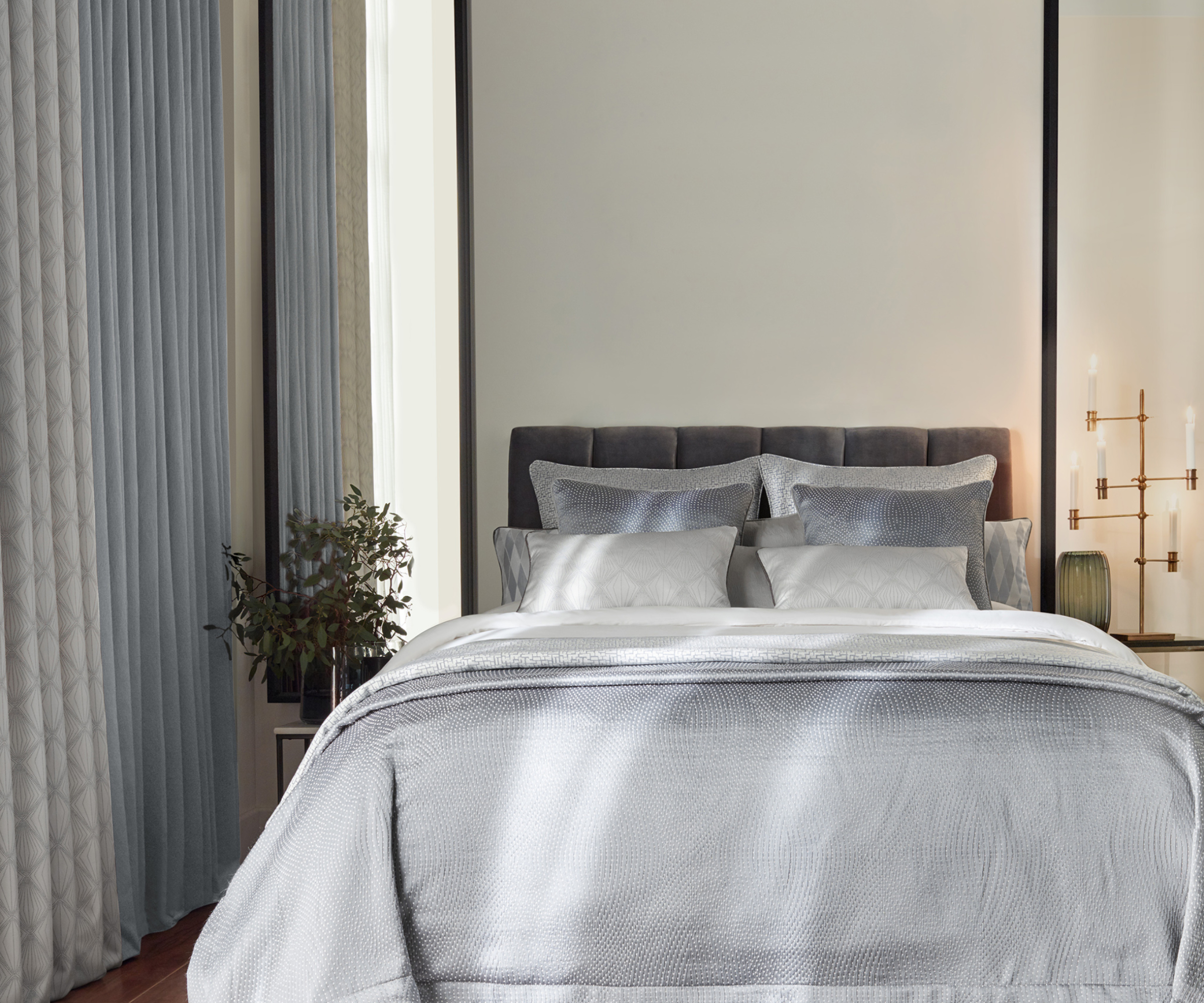
5. Flooring
While bedroom flooring ideas will often centre around carpet choices such as wool carpet vs polypropylene, colour and pattern play a role in your quest to find out how to make a small bedroom look bigger.
"Maintain the same flooring throughout the room," says Ian Hall, "as using the same flooring can create a unified look that makes the overall space feel larger." This could be extended to matching your landing flooring to your bedroom choice. Although the door may be closed a lot of the time, it will help create a flow and illusion of space when opened.
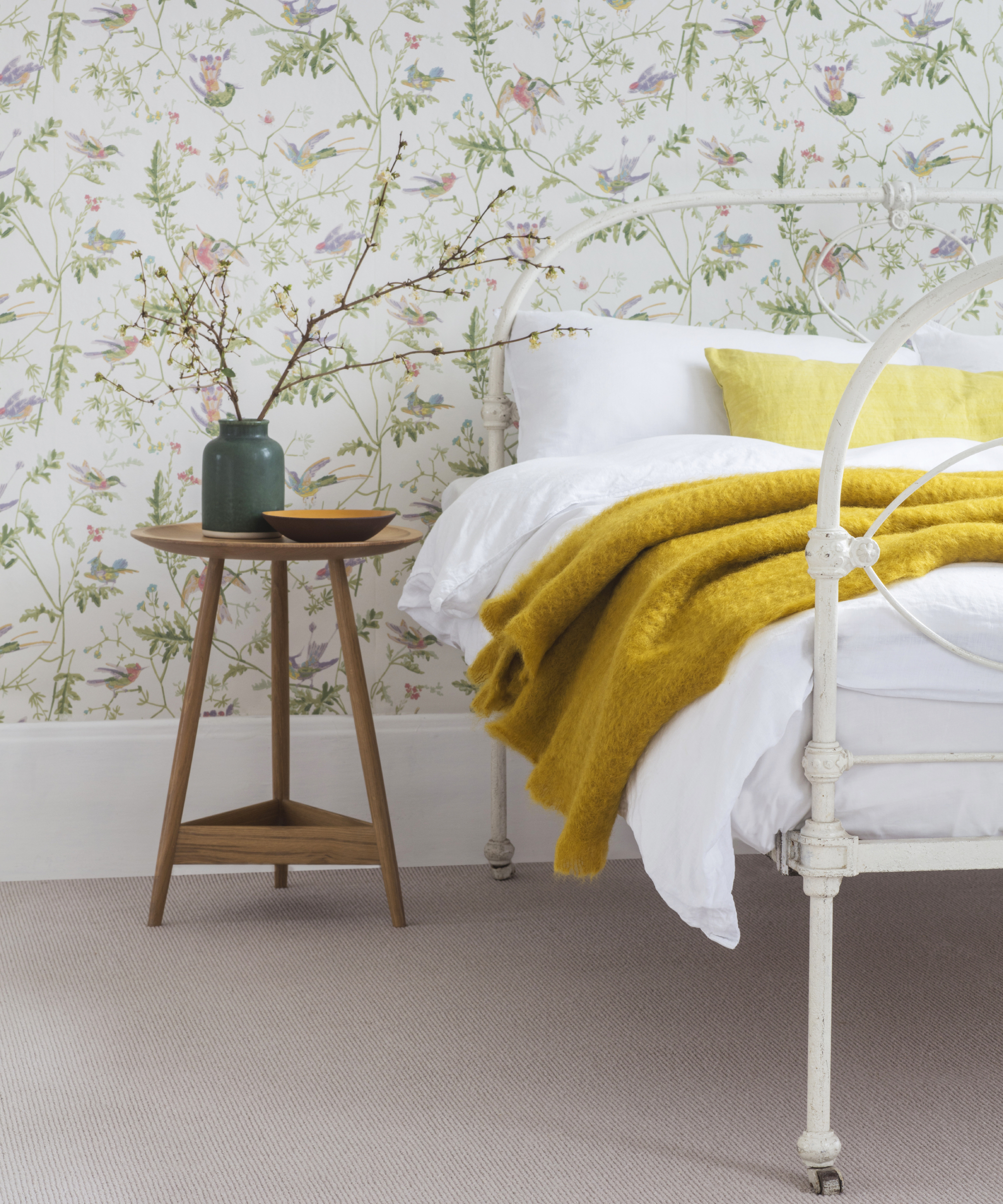
And, despite the fact they may have a different colour, texture, pattern or finish, rugs can also help with small bedroom ideas.
“Similar to how dark walls can transform a small room or a patterned wallpaper can bring interest to otherwise dull space, a patterned rug or carpet is an inspired way to make a feature of a smaller room," says Jodie Hatton, design manager at Brintons. "It can help to add interest and character to the room."
They can also serve a practical purpose says Ian Hall, who often suggests to clients that they use rugs to define different areas without physical partitions. "Properly sized rugs can help delineate spaces efficiently, like separating a dressing area from a sleeping space without using dividers."
Although it's important to be guided by the rules, Debbie Leigh offers one final piece of advice. "Remember that personal preference plays a significant role in every interior design, so choose colours that resonate with your style while keeping the overall goal of creating a bright and inviting atmosphere in mind."
For more bedroom ideas that use lighter colours, take a look at some neutral bedroom ideas, or find out just what are the best bedroom colours and how to create the comfiest cosy bedroom ideas.

Sarah is Homebuilding & Renovating’s Assistant Editor and joined the team in 2024. An established homes and interiors writer, Sarah has renovated and extended a number of properties, including a listing building and renovation project that featured on Grand Designs. Although she said she would never buy a listed property again, she has recently purchased a Grade II listed apartment. As it had already been professionally renovated, she has instead set her sights on tackling some changes to improve the building’s energy efficiency, as well as adding some personal touches to the interior.
